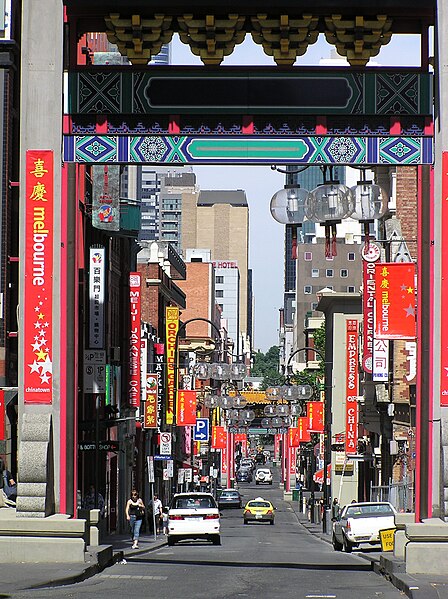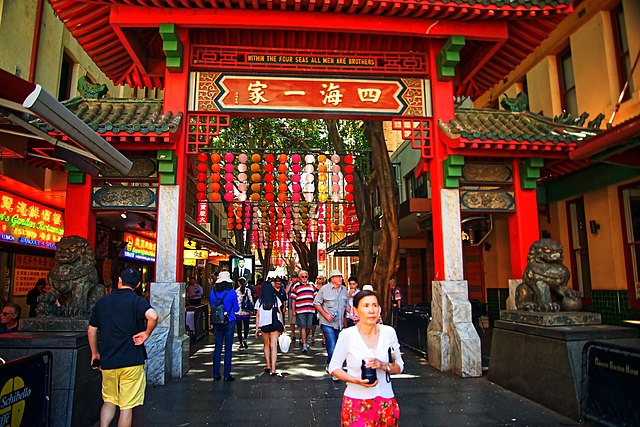Chinatowns in Australia is a term used to describe major Chinese ethnic enclaves in Australia, especially those that claim to retain a strong Chinese cultural identity and a strong relationship with China. Chinatowns exist in most Australian states and territories, especially in the highly-populous and cosmopolitan capital cities but also in rural areas. Many large present-day Chinatowns in Australia have developed out of smaller historical Chinese settlements in Australia dating back to the 19th century. Chinese people first immigrated to Australia in large waves in the midst of the Australian gold rushes. Many of these people subsequently chose to return to China or were forcefully deported from Australia. The first known Chinese Australian was John Shying, who immigrated to Australia in 1818.
Melbourne Chinatown
Woolley Street in Dickson at night, seen sometimes as Canberra's 'Chinatown'
Paifang at Sydney's Chinatown.
Chinese precinct entrance in Bendigo
History of Chinese Australians
The history of Chinese after those from the British Isles. Significant Chinese emigration only began in earnest after the discovery of gold and the subsequent gold rushes in Australia. This migration shaped and influenced Australian policies on immigration for over a century. Despite facing societal discrimination and restrictive immigration policies, Australians of Chinese descent have
Chinese immigrants arriving in Melbourne's Chinatown, located on Little Bourke Street, 1866
Bird's-eye view of Ballarat with Chinese gold miners in the foreground, 1858, by George Rowe
White Hills Cemetery Chinese Section
Chinese market gardener, ca. 1893








